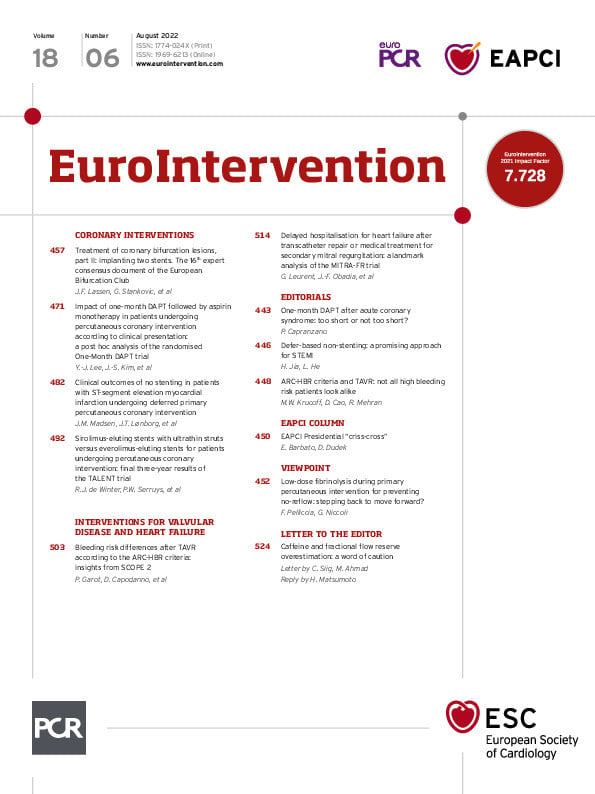The letter by Siig et al1 raises a question about caffeine's antagonism to adenosine-induced coronary hyperaemia, in connection with our recent publication2, by quoting a paper by Kasumi et al3. They showed no relationship between adenosine triphosphate-induced hyperaemia and caffeine intake before fractional flow reserve (FFR) measurements. The paper, however, has critical limitations. First, they evaluated the time from the last caffeine intake alone and did not measure serum caffeine levels, which precluded any conclusion on the effect of caffeine on adenosine-induced FFR (FFRADN). Other than the time from the last caffeine intake, several factors influence serum caffeine levels, including habitual caffeine consumption, caffeine concentration or dose in food or beverages recently ingested, and the wide variation in the half-life of caffeine. Secondly, nicorandil was used as a comparator of adenosine triphosphate. Historically, the hyperaemic efficacy of adenosine has been validated against papaverine45, which is the most reliable agent for maximal hyperaemia induction67. Although nicorandil-induced FFR values were not statistically different from FFRADN values in validation studies for nicorandil FFR, the Bland-Altman limits of agreement were quite large89. Additionally, the reports did not provide any information on serum caffeine levels and caffeine abstinence. Moreover, we recently demonstrated that nicorandil was inferior to papaverine in terms of hyperaemic efficacy7.
The authors hypothesise that caffeine, which binds to adenosine receptors, acts as a hyperaemic agent, which leads to FFRADN underestimations. This is an incoherent argument. It has been validated that caffeine antagonises the pharmacologic actions of adenosine by competitively blocking adenosine receptor activity10. Our data demonstrated that serum caffeine level was the strongest factor associated with FFRADN overestimation in the multivariable analysis2. Since FFR is the ratio of the mean distal coronary artery pressure (Pd) to the mean aortic pressure (Pa) during maximal hyperaemia – the lowest achievable Pd/Pa value – the term "FFR underestimation" does not make any sense.
Finally, the letter notes sex differences in caffeine antagonism to adenosine-induced hyperaemia. In a recently published Rubidium-82 positron emission tomography study conducted on healthy young volunteers, caffeine influenced adenosine-induced myocardial blood flow and myocardial flow reserve at lower serum caffeine levels in men than in women11. This is an interesting standpoint. Microvascular function and adenosine receptor expression may differ between the sexes. Nevertheless, the result from healthy volunteers cannot be applied to adenosine-induced FFR measurements in older patients with coronary atherosclerosis or impaired microvascular function. Furthermore, the use of Rubidium-82 with a well-known roll-off phenomenon12 is also a major limitation of the study. In our study, the result was consistent, regardless of sex.
The effect of caffeine on FFRADN is clinically relevant. Further investigation is warranted with a larger cohort of patients composed of different ethnic groups.
Conflict of interest statement
The author has no conflicts of interest to declare.
Supplementary data
To read the full content of this article, please download the PDF.

